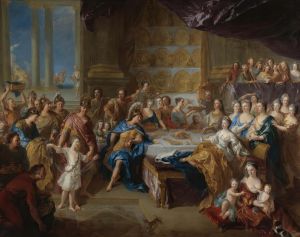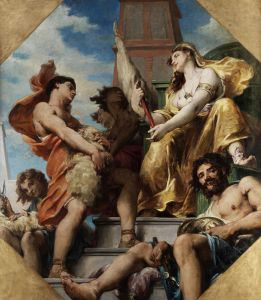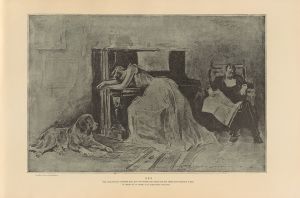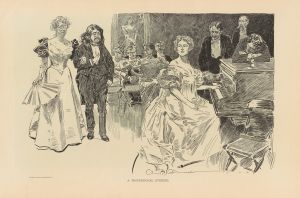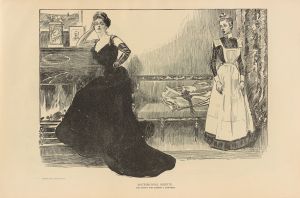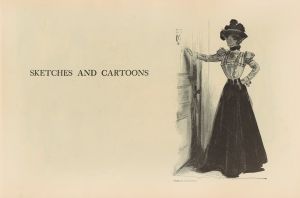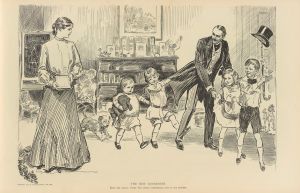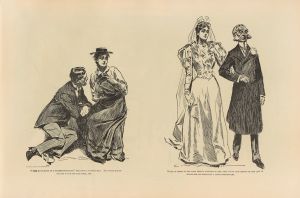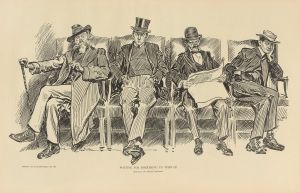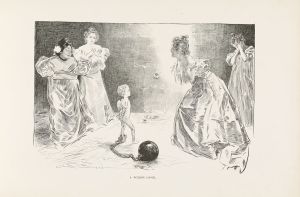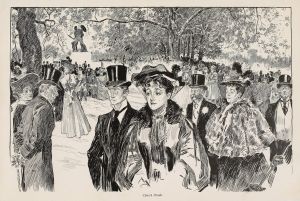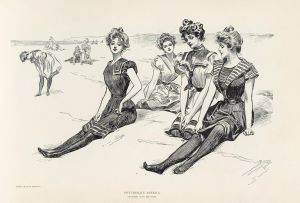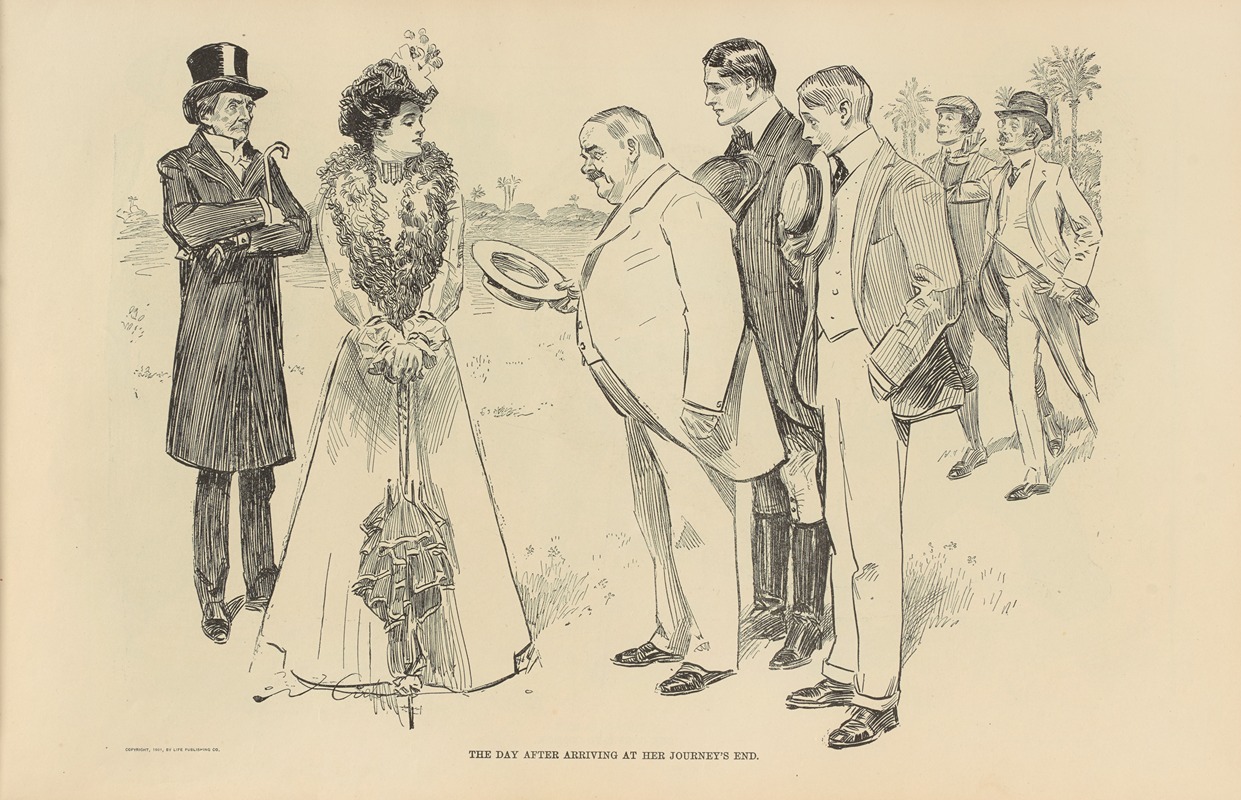
The day after arriving at the journey’s end
A hand-painted replica of Charles Dana Gibson’s masterpiece The day after arriving at the journey’s end, meticulously crafted by professional artists to capture the true essence of the original. Each piece is created with museum-quality canvas and rare mineral pigments, carefully painted by experienced artists with delicate brushstrokes and rich, layered colors to perfectly recreate the texture of the original artwork. Unlike machine-printed reproductions, this hand-painted version brings the painting to life, infused with the artist’s emotions and skill in every stroke. Whether for personal collection or home decoration, it instantly elevates the artistic atmosphere of any space.
"The Day After Arriving at the Journey’s End" is a notable illustration by Charles Dana Gibson, an influential American graphic artist best known for his creation of the iconic "Gibson Girl." This particular work, like many of Gibson's illustrations, captures the social dynamics and cultural nuances of the late 19th and early 20th centuries.
Charles Dana Gibson was born on September 14, 1867, in Roxbury, Massachusetts. He studied at the Art Students League in New York City and began his career as an illustrator in the 1880s. Gibson's work gained widespread popularity, and he became a leading figure in the world of illustration. His illustrations were featured in prominent magazines such as Life, Harper's Weekly, and Scribner's, among others.
"The Day After Arriving at the Journey’s End" is one of Gibson's many illustrations that reflect his keen observation of society and his ability to convey complex emotions and narratives through his art. The illustration typically depicts a scene that resonates with the themes of travel, arrival, and the subsequent emotions experienced by the characters involved. Gibson's work often included detailed and expressive line work, capturing the subtleties of human expressions and interactions.
Gibson's illustrations, including "The Day After Arriving at the Journey’s End," are characterized by their elegance and sophistication. They often feature well-dressed men and women, reflecting the fashion and social norms of the time. The "Gibson Girl," a recurring figure in his work, epitomized the idealized American woman of the early 20th century—confident, independent, and stylish. While it is not explicitly stated whether the "Gibson Girl" appears in this particular illustration, the themes and style are consistent with Gibson's broader body of work.
Gibson's influence extended beyond illustration; he played a significant role in shaping American popular culture. His work provided a visual commentary on the changing roles and expectations of women in society, as well as the evolving social dynamics of the time. The popularity of his illustrations contributed to the cultural landscape of the era, making him one of the most celebrated illustrators of his time.
In addition to his work as an illustrator, Gibson was also involved in other artistic endeavors. He served as the president of the Society of Illustrators and was an advocate for the professionalization of the field. His contributions to the arts were recognized and celebrated during his lifetime, and his legacy continues to be appreciated by art historians and enthusiasts.
Charles Dana Gibson passed away on December 23, 1944, but his work remains influential. "The Day After Arriving at the Journey’s End" is a testament to his skill as an illustrator and his ability to capture the essence of his time. Through his detailed and expressive illustrations, Gibson provided a window into the social and cultural fabric of early 20th-century America, leaving a lasting impact on the world of art and illustration.






